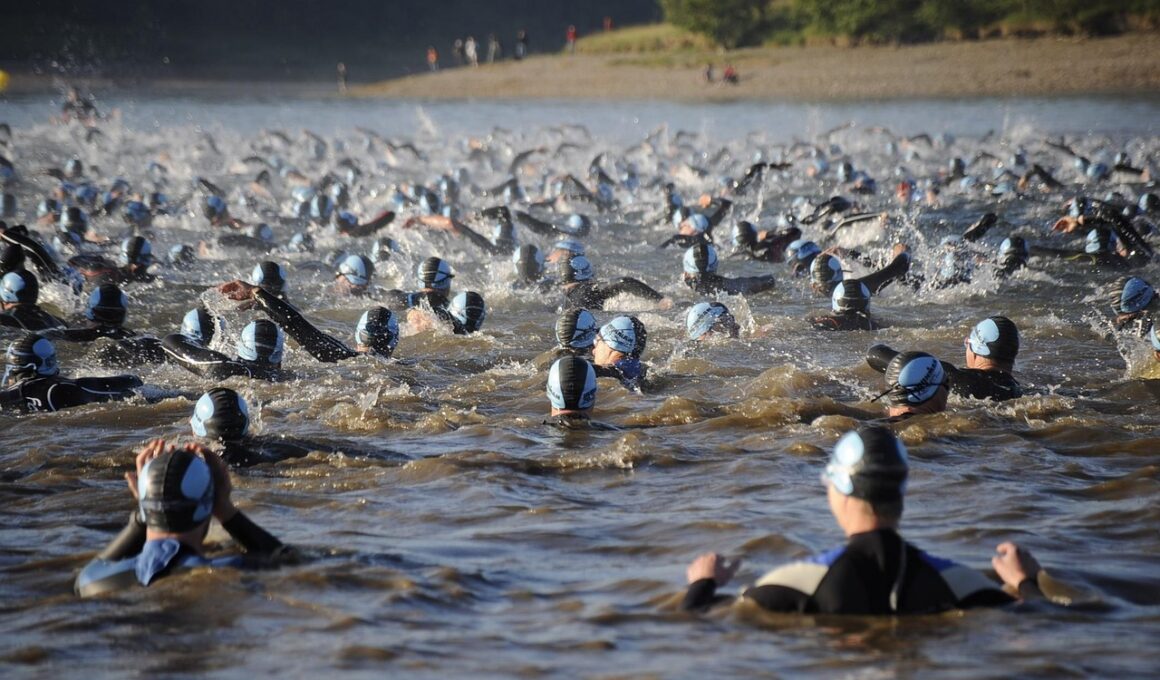Tracking Your Progress: Tools and Metrics for Ironman Athletes
As you embark on your Ironman journey, effectively tracking your training progress is crucial. This involves monitoring metrics that showcase your endurance and strength development throughout the process. Several tools and devices are specifically designed for triathletes, allowing for detailed tracking of your workouts. Depending on your preference, you might choose a smartwatch, a fitness tracker, or even a mobile app tailored for triathlon training. Each tool has unique features that cater to your specific needs, helping you analyze your performance in the swim, bike, and run segments of your triathlon. Additionally, integrating these tools with a training log or diary can provide insights that are hard to glean from numbers alone. You may find it valuable to establish personal benchmarks early on, which will enable you to measure your progress against them as your training intensifies. Keeping track also helps identify patterns and areas that require improvement, ensuring that you can adjust your training plan as necessary.
When it comes to measuring performance, focusing on key metrics is essential for Ironman athletes. One common metric you should track closely is your heart rate during workouts. This provides insights into your cardiovascular efficiency and helps prevent overexertion. Recording average heart rates for each segment—swimming, biking, and running—can guide your intensity in training rides, allowing you to optimize your efforts. Another important metric is pace, which is vital for assessing your speed and endurance. Utilizing your GPS watch can provide precise pace data, enabling you to strategize your race pace and develop appropriate training sessions. Furthermore, don’t overlook distance; monitoring the distances covered during workouts helps in understanding how much volume you can handle as your body adapts. Visualizing your performance metrics through graphs and tables can make it easier to pinpoint trends and adjust your training regimen. Being attentive to these key elements proves essential for achieving your goals, especially as you prepare for the demands of Ironman racing.
Nutrition is another important aspect that directly influences your training outcomes, as fueling your body appropriately contributes significantly to performance metrics. For Ironman athletes, a well-structured nutrition plan will directly correlate with your training success. Using apps to log your meals and hydration can help you monitor your nutritional intake daily. As your training progresses, you will require more energy-dense meals and hydration strategies to stave off fatigue and sustain endurance. Tracking personalized nutrition metrics, including caloric intake and macronutrient ratios, will facilitate optimal performance and recovery. Additionally, it is crucial to adapt your dietary plan according to your specific training schedule, ensuring that you receive adequate nutrition before, during, and after workouts. Some athletes introduce a fueling plan for long runs or rides to simulate race scenarios. Remember, individuals may respond differently to various diets; hence, experimenting with different foods during training sessions can help find the best fit for race day. Overall, maintaining a balanced nutritional approach will set the foundation for success.
Utilizing Data Analytics for Training Optimization
In the age of technology, sports data analytics have revolutionized how athletes monitor and enhance their performance. From advanced metrics to sophisticated software, triathletes can access a treasure trove of data that can lead to improved training strategies. Analysis tools can provide feedback on various parameters, such as cycling power output, swim stroke efficiency, and running dynamics. By understanding these metrics, athletes are empowered to fine-tune their training regimen, focusing on specific weaknesses that may hinder performance. For instance, leveraging power meters during bike workouts allows for more informed pacing strategies, while swim stroke captors can reveal inefficiencies in technique. Moreover, comparing past data with current performance metrics can reveal trends, enabling athletes to make informed decisions. Many triathletes also share their performance data with coaches or training groups to enjoy collaborative learning. By utilizing analytics, you can enhance your approach to Ironman training and ensure you are on the right path to achieving your race goals.
Weekly and monthly assessments are indispensable to gauge your training success as part of the process. Regularly evaluating your performance metrics is necessary for identifying and addressing any weaknesses. These assessments may include time trials, pacing tests, or structured workouts at specific intensities. Setting specific goals helps in creating benchmarks that facilitate progress evaluation. If your goal is to shave time off your swim, measure your lap times weekly. If cycling performance is your target, utilize a stationary bike to track your power output on a regular basis. Conducting these checks ensures that your training is aligned with your objectives and holds you accountable for your progress. Additionally, documenting outcomes will create visual representation through graphs or charts. This way you can clearly see how much you are improving over time. Without assessment, it can be challenging to discern whether the training is effective or if you need to tweak the variables in your program. Regular evaluations create milestones that not only motivate you but also enhance your training experience.
Social interactions and support networks in triathlon training can significantly enhance your motivation and commitment levels. Participating in group training sessions not only provides a sense of community but also creates opportunities to share insights on tracking progress. Discussing experiences with fellow athletes can help you develop a broader understanding of effective tracking methods. These social environments foster relationships, making training more enjoyable. Social media platforms and forums dedicated to triathlon serve as excellent resources for sharing performance metrics and seeking advice. Engaging with others allows you to celebrate victories and discuss challenges collaboratively. Moreover, accountability becomes key when others are invested in your journey. Positive reinforcement from friends and family can motivate you to stay on track, ultimately contributing to more consistent training efforts. Whether you join a local triathlon club or participate in online communities, leveraging social support can elevate your performance. Additionally, using training apps that allow for sharing progress with friends can further enhance motivation, making the process of training for an Ironman not just about individual effort, but about collective success.
Conclusion: The Path to Ironman Success
In conclusion, tracking your training progress as an Ironman athlete encompasses various tools and metrics essential for optimizing performance. The right combination of technology, nutrition, assessments, and social support can significantly contribute to your success. By consistently monitoring your workouts, paying attention to key metrics, and employing data analytics, you position yourself for improved performance. Additionally, engaging with the broader community of triathletes enhances both motivation and knowledge sharing, while conducting regular assessments ensures a clear understanding of your progress. Embracing a multifaceted approach to tracking will empower your training experience and help you build endurance, strength, and skills necessary for the Ironman race. As you embark on this journey, remember that each measure of progress, no matter how small, is an essential piece of your larger goal. Enjoy the ride, embrace the challenges, and celebrate the milestones along the way. Ultimately, success in Ironman training isn’t merely about completion; it’s also about the growth and knowledge gained throughout the journey.


